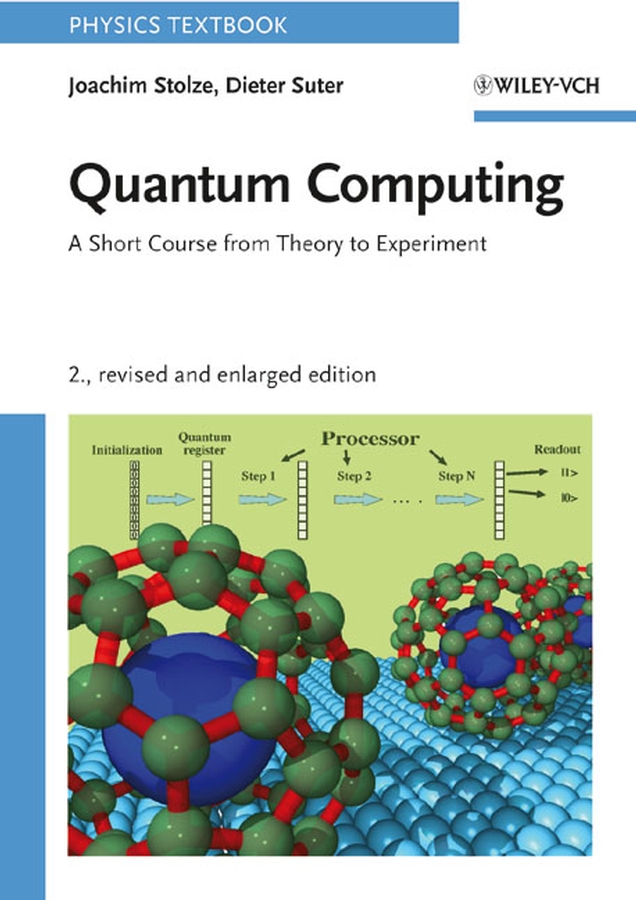
Quantum computing: a short course from theory to experiment
Stolze, Joachim
Suter, Dieter
This is the second edition of the successful textbook which has emerged from a lecture series. The compact introduction addresses graduate students with a reasonably good background in physics, notably in quantum mechanics, plus someknowledge in introductory statistical mechanics and solid-state physics. The authors explain basic concepts from quantum mechanics and computer science which are used throughout the whole field of quantum computing and quantum communication. This second edition reflects the rapid development of the main ideas and techniques, e.g. by including the most recent experiments on cold atoms. INDICE: Preface.1 Introduction and Survey.1.1 Information, Computers, and Quantum Mechanics.1.2 Quantum Computer Basics.1.3 History of Quantum Information Processing.2 Physics of Computation.2.1 Physical Laws and Information Processing.2.2 Limitations on Computer Performance.2.3 The Ultimate Laptop.3 Elements of Classical Computer Science.3.1 Bits of History.3.2 Boole an Algebra and LogicGates.3.3 Universal Computers.3.4 Complexity and Algorithms.4 Quantum Mechanics.4.1 General Structure.4.2 Quantum States.4.3 Measurement Revisited.5 Quantum Bits and Quantum Gates.5.1 Single-Qubit Gates.5.2 Two-Qubit Gates.5.3 Universal Sets of Gates.6 Feynman's Contribution.6.1 Simulating Physics with Computers.6.2 Quantum Mechanical Computers.7 Errors and Decoherence.7.1 Motivation.7.2 Decoherence.7.3 Error Correction.7.4 Avoiding Errors.8 Tasks for QuantumComputers.8.1 Quantum Versus Classical Algorithms.8.2 The Deutsch Algorithm: Looking at Both Sides of a Coin at the Same Time.8.3 The Shor Algorithm: It's Prime Time.8.4 The Grover Algorithm: Looking for a Needle in a Haystack.8.5 Quantum Simulations.9 How to Build a Quantum Computer.9.1 Components.9.2 Requirements for Quantum Information Processing Hardware.9.3 Converting Quantum to Classical Information.9.4 Alternatives to the Network Model.10 Liquid State NMR Quantum Computer.10.1 Basics of NMR.10.2 NMR as a Molecular Quantum Computer.10.3 NMR Implementation of Shor's Algorithm.11 Trapped Ions and Atoms.11.1 Trapping Ions.11.2 Interaction with Light.11.3 Quantum Information Processing withTrapped Ions.11.4 Experimental Implementations.11.5 Neutral Atoms.11.6 Interacting Atoms in Optical Lattices.12 Solid-State Quantum Computers.12.1 Solid State NMR/EPR.12.2 Superconducting Systems.12.3 Semiconductor Qubits.13 Photons for Quantum Information.13.1 "QuantumOnly" Tasks.13.2 A Few Bits of Classical Information Theory.13.3 A Few Bits of Quantum Information Theory.Appendix.A Two Spins-1/2: Singlet and Triplet States.Bibliography.Index.
- ISBN: 978-3-527-40787-3
- Editorial: Verlag Chemie
- Encuadernacion: Rústica
- Páginas: 282
- Fecha Publicación: 01/01/2008
- Nº Volúmenes: 1
- Idioma: Inglés
